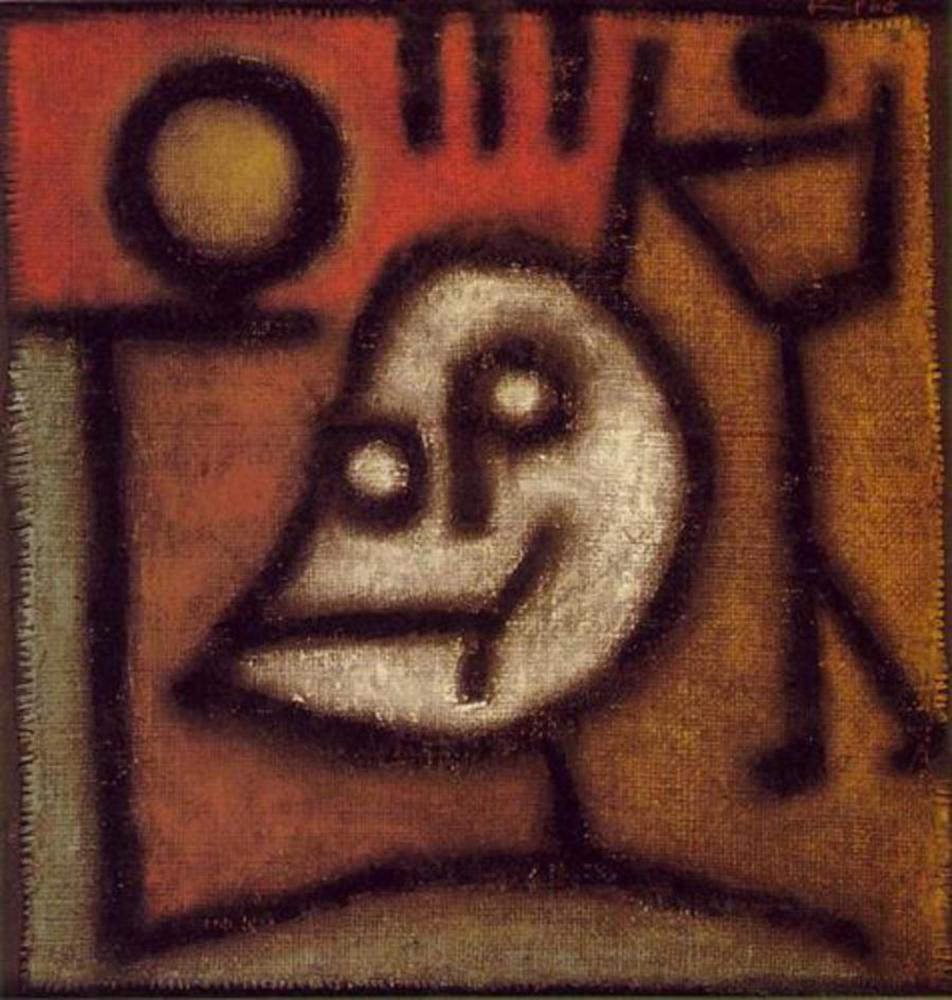Artist
Paul Klee contributed over 9000 works over his lifetime. The main types of art that he created were expressionist, surrealist, and cubist, a predecessor of abstract art. An interesting thing about Klee was that he was born to two musicians and had background in both musical and visual art. He emulated the art of children, which were full of raw emotion and free from any past preconceptions of what art should be. He experimented with color theory and used colors to his full advantage in some of his works. He also experimented with hieroglyphs and liked to include symbols such as musical symbols or words in his works. The media he used varied greatly. He used "oil paints, watercolors, ink, pastel, etching, etc.," on "canvas, burlap, muslin, linen, gauze, cardboard, metal foils, fabric, wallpaper, and newsprint" (Kagan 26). Klee even made plastic hand puppets for his son. A theme that reoccurs in his artwork is music, unsurprisingly. Klee mentioned in a journal once that "the more horrifying the world becomes (as it is these days) the more art becomes abstract" (Economist "Shape-Shifting"). He chose visual art over music because he found that music had more constructs people must follow.

